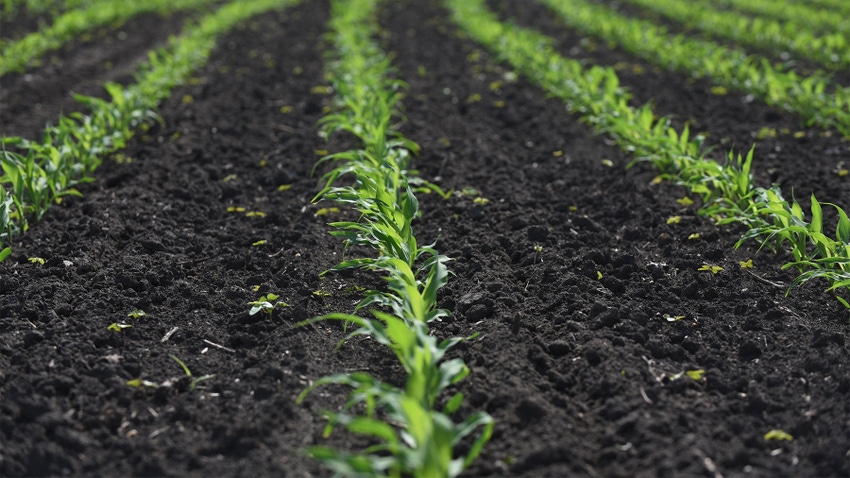
My husband was talking with our 18-year-old son this fall about some ground that was coming up for sale. Nathan said, “Think I could buy it? Or buy some of it?”
John asked him, “Well, how are you gonna make the payments?”
“What do you mean? It won’t pay for itself?”
“Nooooo,” John said.
So then they sat down at the computer and found an amortization calendar. They figured payments at a conservative $15,000 an acre. Nathan knew his costs of production from his recent FFA record books, so he looked up what it cost him to put in an acre of corn.
According to their calculations, at an optimistic 6% interest, he’d have to pay an additional $800 a year per year for 30 years just to make the land payment. On 90 acres, that’s an extra $72,000 a year on top of whatever the crop made.
“How do you think you’re gonna cover this?” John asked him.
Nathan was blown away. “Why? Why would anybody do this?” he asked.
“That’s a very good question,” his dad told him.
“How’s a young guy like me supposed to ever buy ground?”
“That’s another very good question,” his dad said.
Step by step
We could spill a lot of ink talking about how out of whack the farmland markets are right now. But that’s not gonna change anytime soon. And complaining doesn’t solve anything.
So I asked Brad Zwilling: What’s the answer for Nathan, and for every other young farmer like him? Zwilling heads up data analysis for Illinois Farm Business Farm Management (FBFM). Plus, he’s a farm kid raising sons of his own, which means he’s seen the numbers and he knows what young farmers are up against.
“This is a great discussion that I wish more families would have,” Zwilling says. “Buying a piece of farmland versus paying for a piece of farmland are two greatly different things.”
Amen, brother.
Zwilling offers five takeaways:
1. Have good records and know your cost of production. This is the first step, and God bless the FFA for teaching young people how to keep records, no matter how painful. If you don’t know what it actually costs you to grow a crop, you can’t make any other calculation.
2. Know your options. Zwilling recommends talking to a variety of lenders way before the next tract of land comes up for sale. Figure out what’s available for young and beginning farmers through the Farm Service Agency, Illinois Finance Authority, local lenders, Farm Credit and more. At 6% interest and $15,000 an acre, a subsidized loan won’t make it work entirely — but it could be one piece that helps it work a little better.
3. Build up cash. Cash is king — or queen, as Zwilling notes. “A young person has many years ahead of them that can lead to accumulating cash, if you keep good records, analyze your business and always look for opportunities,” he says. As you build up cash, then you can make a larger down payment or pay extra principal over time on a future land buy. Being conservative and saving cash will help down the road.
4. Don’t be afraid to take a calculated chance. Farmland is a good investment over time, if you can afford it. The University of Illinois farmland index shows that every $100 invested in farmland in 1979 is worth over $500 today. And every farm manager and farm real estate expert will tell you that over the last 30 years, farmland investments have produced the best returns and lowest risk. “Low risk” is a relative term, of course, compared to the stock market — and will be determined by how a person manages the land.
5. Opportunities come and go. Be ready for the right one, Zwilling says. Or in other words, don’t bite off too much on a riskier purchase, when a neighbor could retire and offer you another farm at a lower price. Consider all the other financial demands for your available cash and ask some questions: What are the long-term plans for the existing operation? Is someone going to retire, expand or downsize? Do you need cash available to buy into or buy someone out? Can you generate more cash by renting other ground? Do you have other income sources?
I often come back to a conversation with Altona, Ill., farmer David Erickson, who once told me he’d never bought ground when he thought he could afford it. So much truth in that statement. But we all sure like to own ground. We like the longevity and the legacy and, frankly, the control it offers.
But it’s gotta be the right farm at the right time. And these times — like Nathan pointed out — make it hard to pencil out.
Ideas or strategies for buying ground in 2024? I’d love to hear them: Email [email protected].
About the Author(s)
You May Also Like






